One mole of an ideal gas is contained in a perfectly insulating cylinder. Initially adiabatic piston of unit are and unit mass is in equilibrium. Now a block of same mass is kept gently on piston as shown in figure. (Take λ=1.5,g=10m/s2 and neglect friction and assume change in temperature in whole gas is simultaneous)
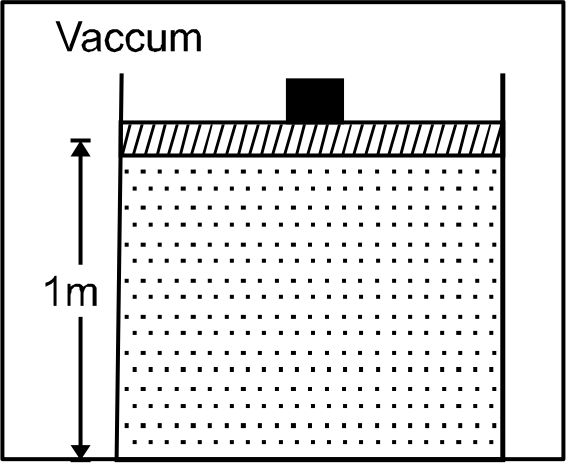
Maximum pressure of gas during its motion:
20√2(5−√3)3/2N/m2
20√2(3+√5)1/2N/m2
20√2(3+√5)1/2N/m2
20√2(3−√5)3/2N/m2
By energy conservation.
2mgh=42RΔT
ΔT=10hR …..(i)
Initially, mgA(A.l)=RT1 …(ii)
and finally, PmaxA(l−h)=RT2 …..(iii)
(iii)-(ii)
Pm(1−h)−10=10h …..(iv)
By equation of adiabatic process PV= constant
mgA(Al)γ=Pmax{A(l−h)}γ
10=Pm(1−h)γ
Put this Pm in equation (iv)
10(1−h)1−γ−10=10h
(1−h)1−γ−1=h
(1−h)1−γ=(h+1)
1√1−h=(1+h)⇒1(1−h)=(1+h)2
h(h2+h−1)=0
h=√5−12m
and Pn=10(1−√5−12)3/2=20√2(3−√5)3/2N/m2
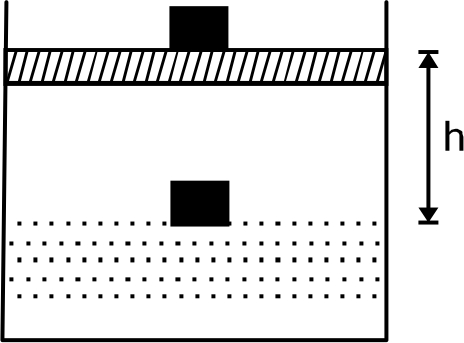
Topper's Solved these Questions
Similar Questions
One mole of an ideal gas is contained in a perfectly insulating cylinder. Initially adiabatic piston of unit are and unit mass is in equilibrium. Now a block of same mass is kept gently on piston as shown in figure. (Take λ=1.5,g=10m/s2 and neglect friction and assume change in temperature in whole gas is simultaneous)
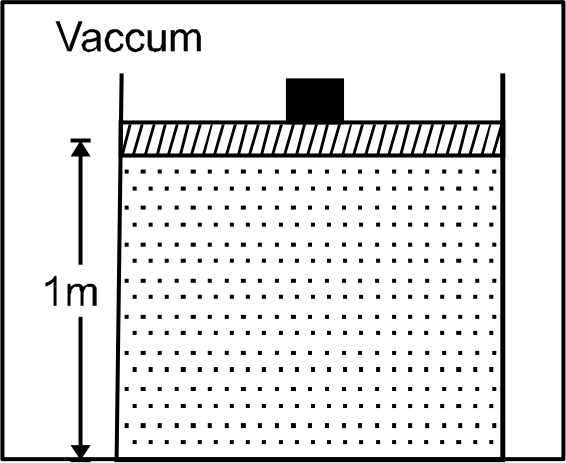
Depth upto which (piston+block) will move before coming to rest again is :
View SolutionConsider one mole of perfect gas on a cylinder of units cross-section with a piston attached (figure). A spring (spring constant K ) is attached ( unstretched length L ) to the piston and to the bottom of the cylinder . Initially the spring is unstretched and the gas is in equilibrium. A certain amount of heat Q is supplied to the gas causing an increase of value from V0 to V1.
(a) What is the initial pressure of the system ?
(b) What is the final pressure of the system?
(c) Using the first law of thermodynamic, write down a relation between Q,pa,V,V0 and K.
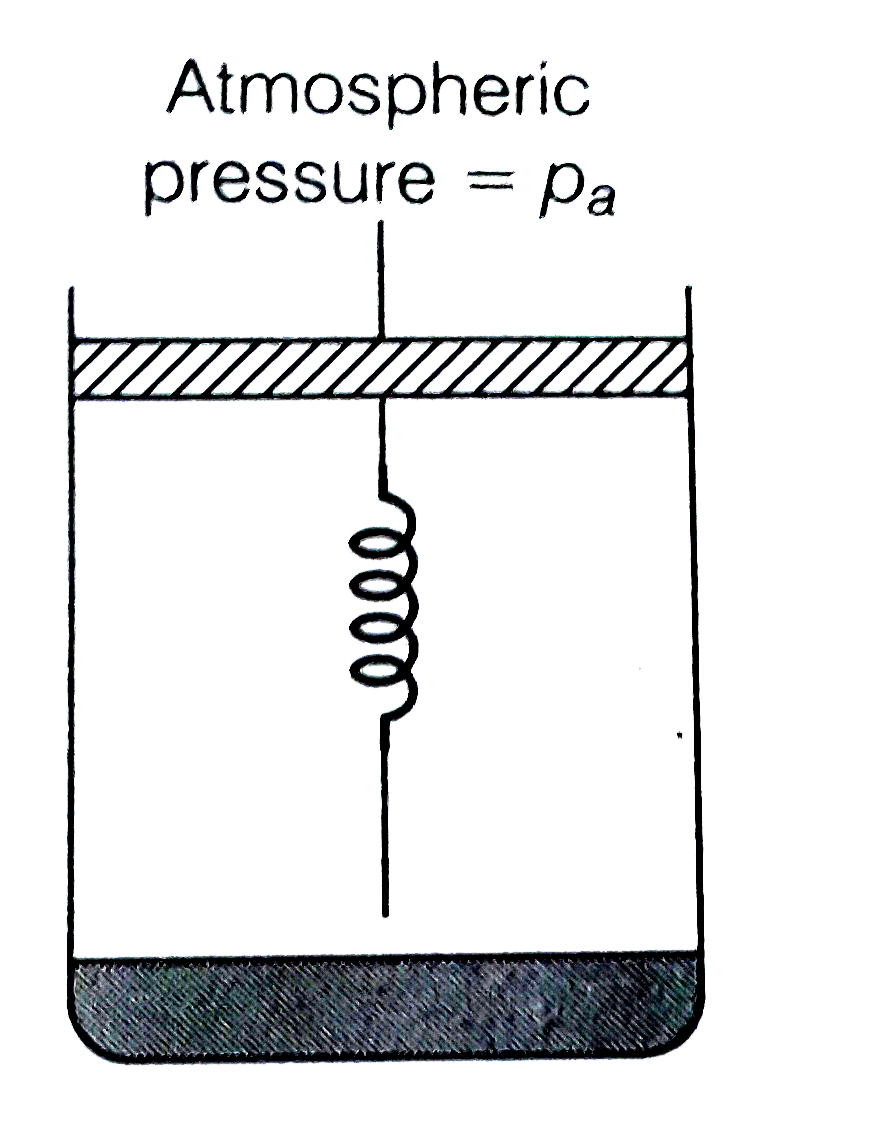
View Solution
Knowledge Check
A cylinder containing an ideal gas is in vertical position and has a piston of mass M that is able to move up or down without friction (figure). If the temperature is increased
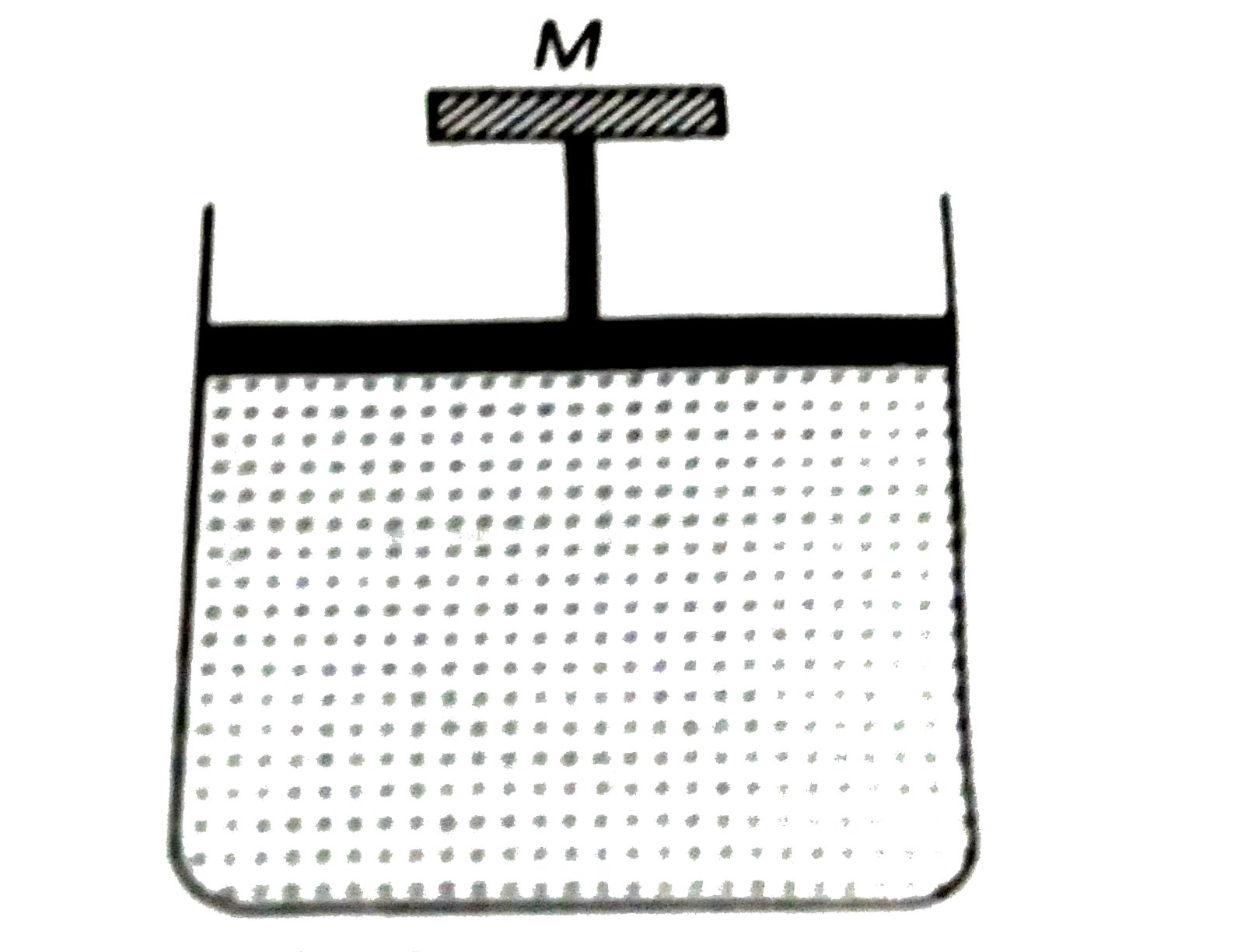 Aboth P and V of the gas will changeBonly P will increase according to Charle's law.CV will change but not PDP will change but not V
Aboth P and V of the gas will changeBonly P will increase according to Charle's law.CV will change but not PDP will change but not V
Two moles of an ideal gas are contained in a vertical cylinder with a frictionless piston. The piston is slowly displaced so that expansionin gas is isothermal at temperature T0=400K. find the amount of work done in increasing the volume to 3 times.t ake atmospheric pressure =105N/m2
View SolutionAn ideal gas is enclosed in a cylinder with a movable piston on top of it. The piston has a mass of 800 g and an area of 5.00cm2 and is free slide up and down, keeping the pressure of the gas constant. How much work is done on the gas as the temperature of 0.200 mol of the gas is raised from 20.0∘C to 300∘C ?
View SolutionFigure shows initial state of an ideal gas trapped in a container with conducting walls and a piston (mass m) which can move without any friction. The container is placed on point supports and its wall are conducting. Assuming that atmospheric pressure is P0 and the mass of the ideal gas is negligible as compared to the mass of the piston and the mass of container. Take the cross section area of piston to be A. The piston is slowly lifted by an external agent and held in its position. Let M be the maximum mass of container so that it may "lift off" while pulling the piston upwards and Pi be the pressure of ideal gas in initial state. Pick the correct choice:

View SolutionA cylinder containing an ideal gas is in vertical position and has a piston of mass M that is able to move up or down without friction (figure). If the temperature is increased

View SolutionA cylinder containing an ideal gas is in verticle postion and has a piston of mass M that is able to move up of down without friction. It the temperature is increased,
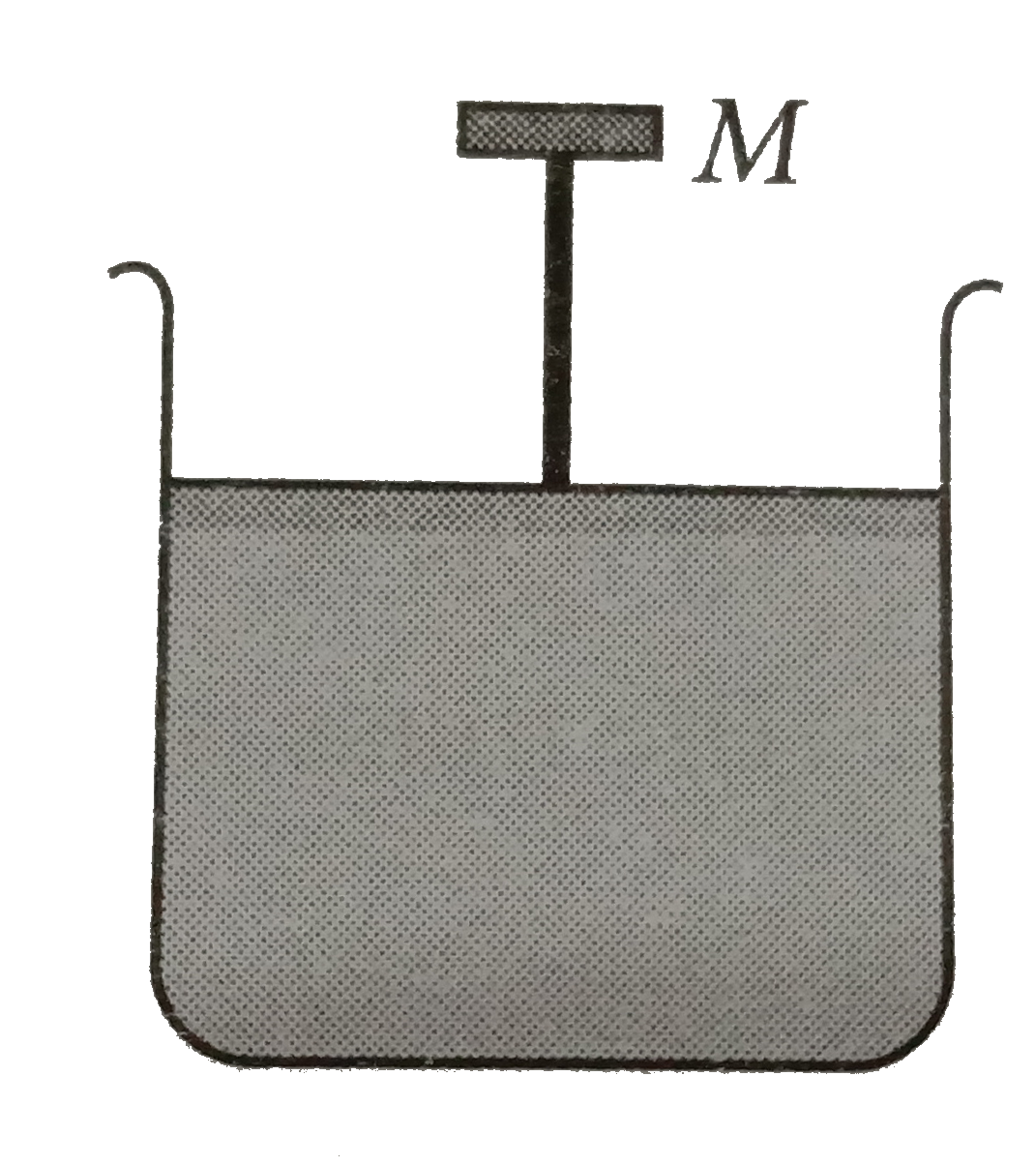
View Solution2.00 mole of a monatomic ideal gas (U=1.5nRT) is enclosed in an adiabatic, fixed , vertical cylinder fitted with a smooth, light adiabatic piston. The piston is connected to a vertical spring of spring constant 200Nm−1 as shown in .the area of cross section of the cylinder is 20.0cm2. initially, the spring is at its natural length and the temperature of the gas is 300K at its natural length. the atmosphere pressure is 100 kPa. the gas is heated slowly for some time by means of an electric heater so as to move the position up through 10 cm. find (a) the work done by the gas (b) the final temperature of the gas and (c ) the heat supplied by the heater.
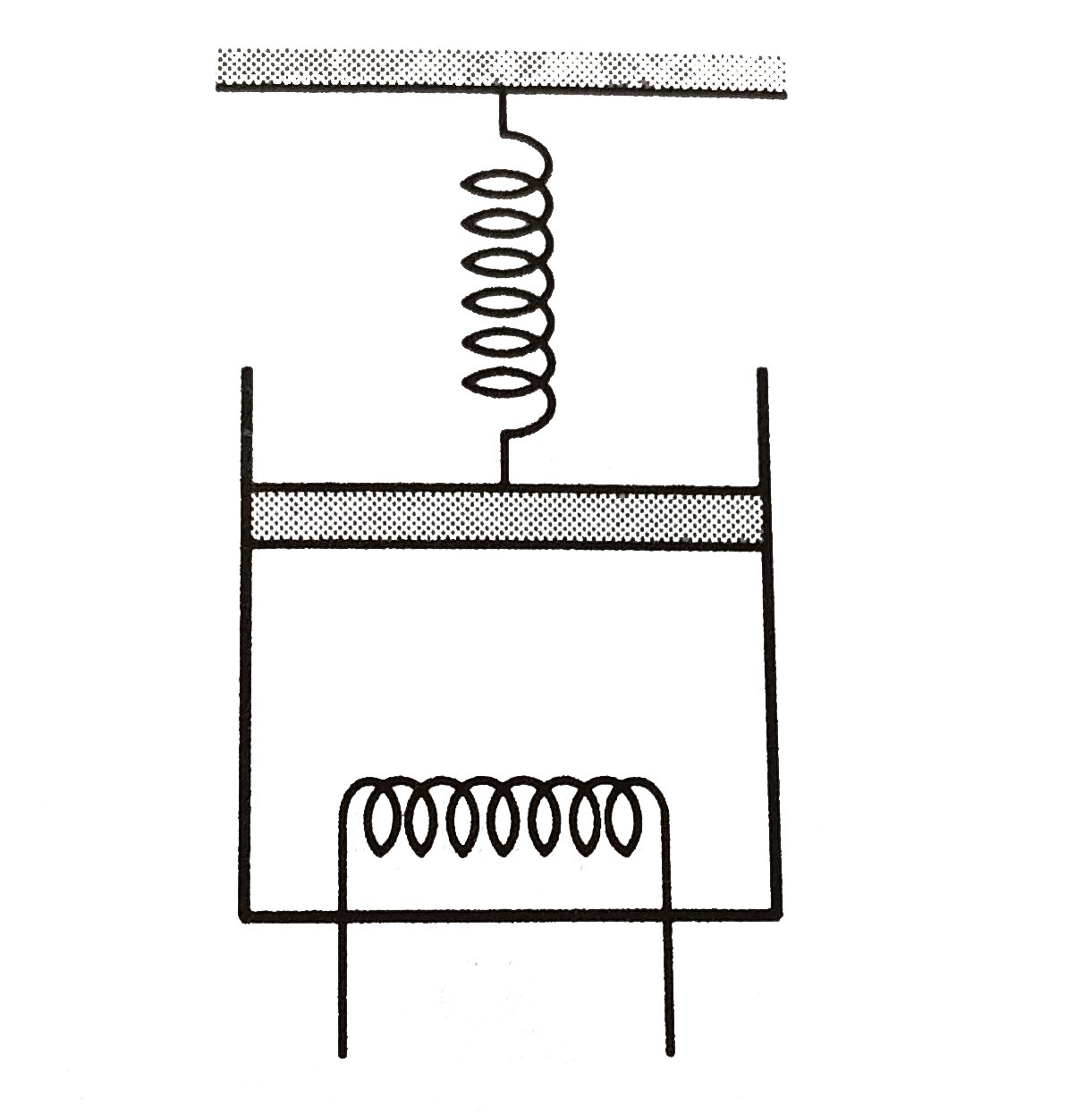
View SolutionOne mole of an ideal monotomic gas undergoes a linear process from A to B in which its pressure p and its volume V change as shown in figure.
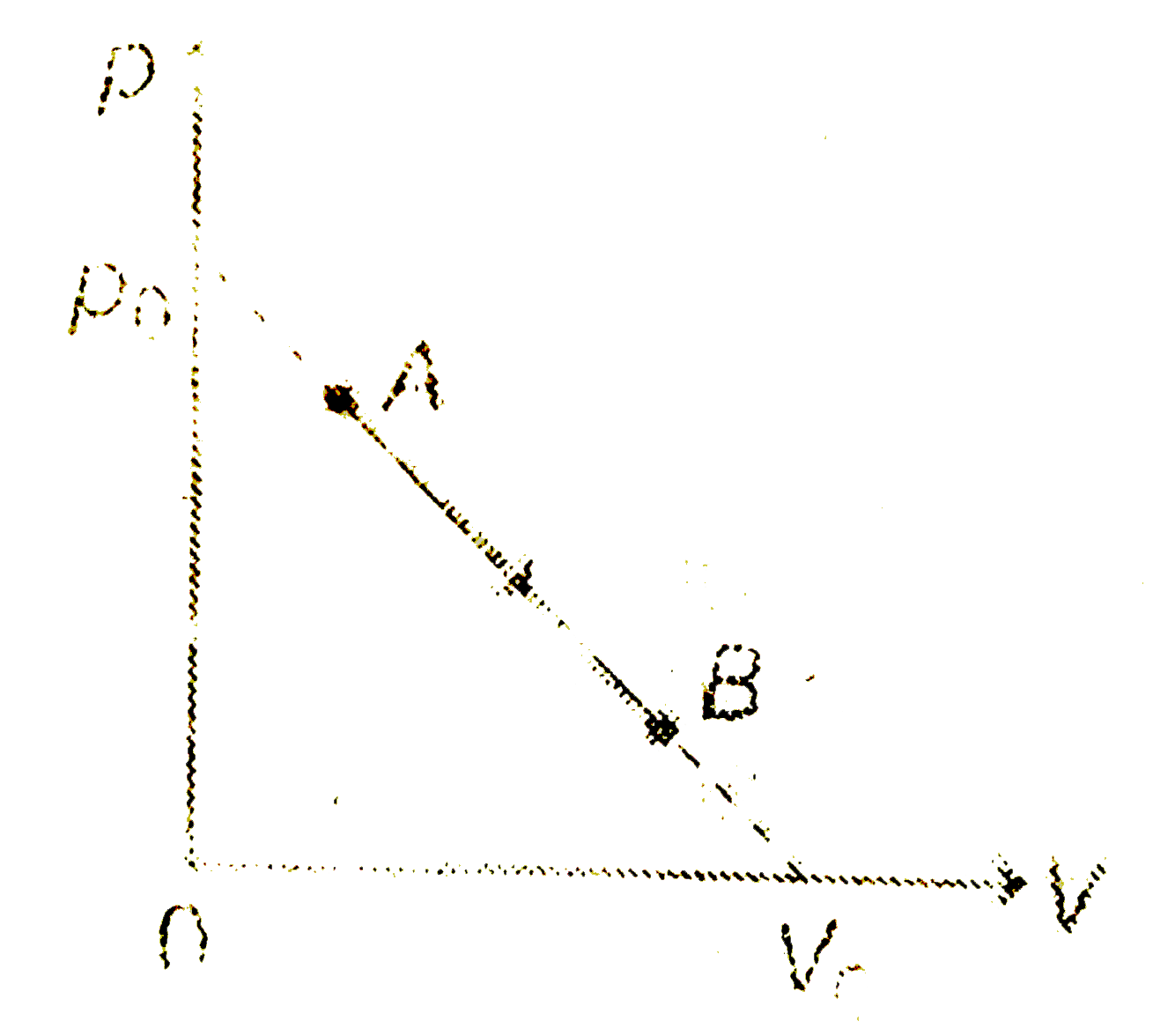
The maximum temperature of the gas during this process is
View Solution
